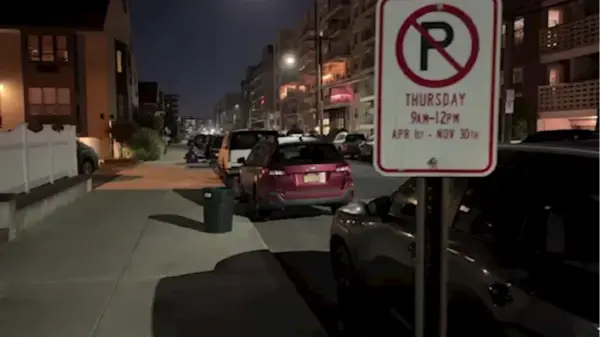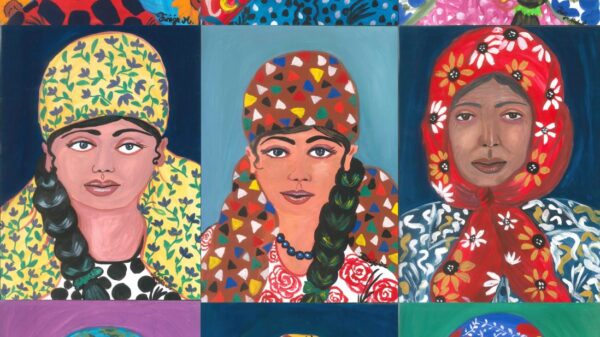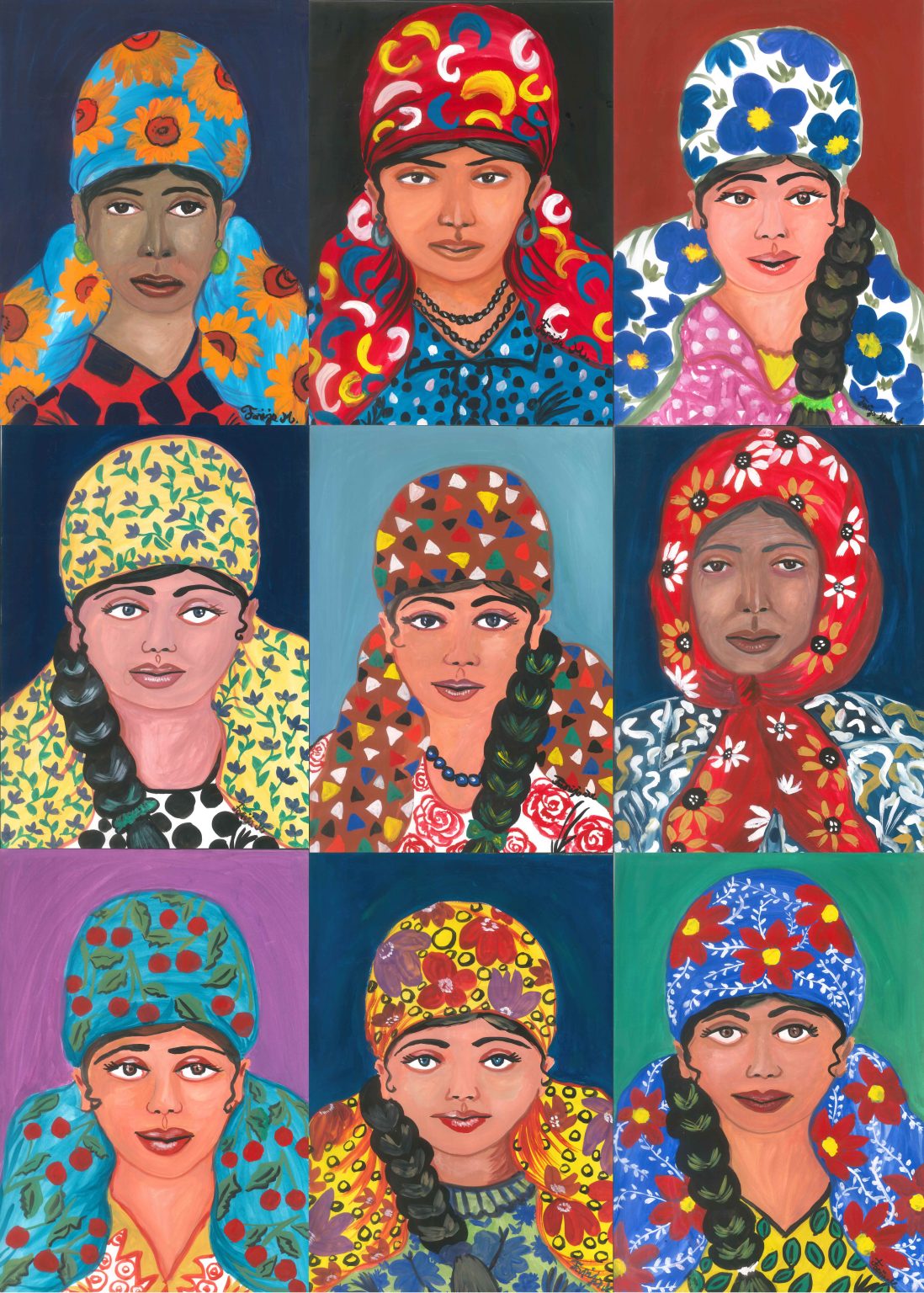Recent exhibitions and artworks are shining a spotlight on contemporary Roma artists, celebrating their unique contributions to the art world. Among the notable works is Małgorzata Mirga-Tas’s billboard titled “Beyond the Horizon” (2024–25), showcased prominently on 18th Street next to the High Line in Manhattan. This piece is part of her series, On the Journey (2024), and has evoked pride in Roma heritage at a time when visibility for Roma artists remains limited in mainstream culture.
The Roma, a marginalized ethnic group comprising approximately 10 to 12 million people in Europe, have faced stigma and prejudice for centuries. With no homeland, they have often been overlooked in discussions about cultural identity. Despite their historical contributions to the arts, Roma artists have rarely received recognition for their heritage. Many have concealed their identities to avoid discrimination, a reality that continues to affect their visibility today.
In recent years, however, there has been a shift in the representation of Roma artists, thanks in part to institutions like the European Roma Institute for Arts and Culture (ERIAC) in Berlin, which is dedicated to promoting Roma cultural heritage. Isabel Raabe, a Berlin-based curator and co-founder of the RomArchive, emphasizes the increasing visibility of Roma artists at international biennials and festivals. “The Roma art scene has changed a lot in the last few decades, especially in the last ten years,” she notes.
Ten Contemporary Roma Artists to Know
Several Roma artists are gaining recognition for their impactful works that challenge stereotypes and highlight their cultural narratives. Here are ten contemporary Roma artists whose contributions are reshaping perceptions.
Małgorzata Mirga-Tas uses recycled fabric to reinterpret well-known imagery and personal photographs, creating dynamic characters that embody universal themes such as community and motherhood. Her installation “Daj he ćhaworo” (Mother with child, 2022) exemplifies her approach, inviting viewers into a narrative of dignity and hope. Mirga-Tas’s work serves as a counter-narrative to historical stereotypes, transforming second-hand materials into vibrant stories of Roma identity.
Ceija Stojka, a Holocaust survivor, dedicated her life to depicting the experiences of Roma during the Porajmos, the Romani term for the Holocaust. Her exhibition at the Austrian Cultural Forum New York, “What Should I Be Afraid Of? Roma Artist Ceijia Stojka,” commemorates her legacy. Stojka’s paintings, such as “Liberation of Bergen-Belsen” (1993), provide haunting insights into her traumatic past while celebrating her cultural heritage.
The artistic duo of Damian Le Bas and Delaine Le Bas has made significant contributions to the Roma art movement. Damian, known for his cartographic works, aimed to assert Roma presence and agency. Delaine, who explores themes of vulnerability and gendered experiences, was nominated for the prestigious Turner Prize in 2024. Their work collectively addresses the intersection of identity, space, and representation within the Roma community.
Gabi Jiménez, a French painter, employs expressive and satirical styles to critique societal discrimination against Roma people. His politically charged works, such as “Expulsions” (2008), visually confront the injustices faced by Roma communities in France. In 2014, he received recognition from Spain’s Ministry of Culture for his human rights advocacy through art.
Farija Mehmeti, an artist encouraged by Roma activist Paul Polansky, focuses on the portrayal of Roma women. Her portraits capture their daily lives and emotions, challenging the exoticized representations often perpetuated by non-Roma artists. Through her work, Mehmeti amplifies the voices of women in her community, bringing attention to their struggles and resilience.
Daniel Baker, a Roma scholar and artist, employs mirrors and reflective surfaces in his work to explore themes of identity and representation. His pieces, such as “Sign Looking Glass” (2005), address the discrimination faced by Roma and highlight the complexities of their cultural narratives. Baker’s work encourages viewers to engage with the realities of Roma existence, juxtaposing stereotypes with lived experiences.
Manolo Gómez Romero, influenced by his family’s artistic legacy, primarily focuses on abstract painting that reflects the vibrancy of flamenco. His works, such as “Gitano (Roma) Dream” (2024), express the dynamic essence of Roma culture through abstract forms and colors.
Mircea Lacatus, a Romanian sculptor, captures intimate moments between mothers and children in his sculptures. His works are characterized by a deep emotional resonance, inviting viewers into a space of connection and love. Lacatus’s art reflects the nurturing aspects of Roma culture, emphasizing the significance of familial bonds.
Lastly, Marcus-Gunnar Pettersson, a young illustrator from Sweden, has made strides in creating children’s literature that features Roma protagonists. His books aim to educate and empower new generations of Roma children, fostering a sense of pride and identity.
As the Roma art scene continues to evolve, these artists stand at the forefront, challenging narratives and expanding the visibility of Roma culture. The hope is that their works will one day be celebrated in major museums and art collections worldwide. As Isabel Raabe articulates, “I would like to see a greater percentage of Roma artists in the collections of the world’s major museums.” Achieving this would not only acknowledge their contributions but also ensure that Roma narratives are integrated into the broader history of art.







































































